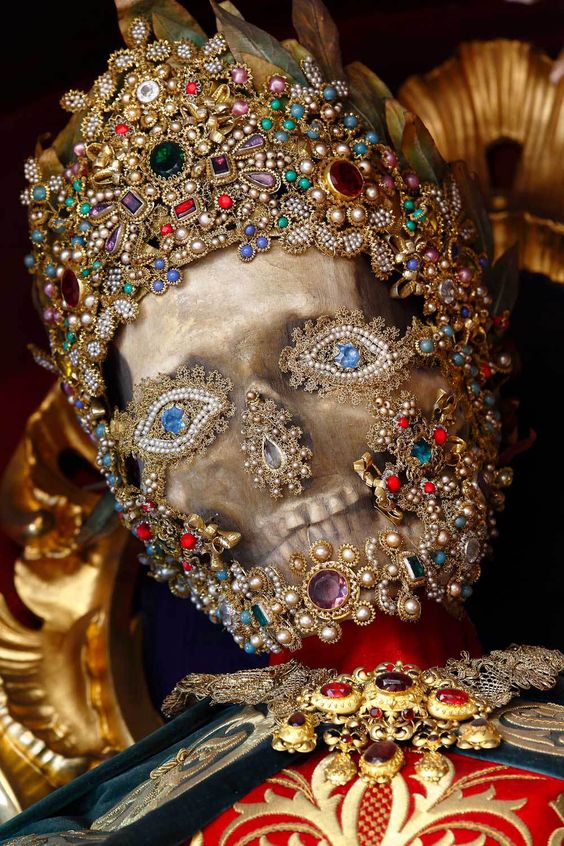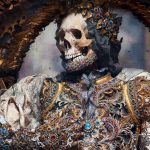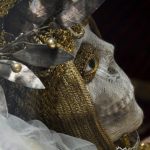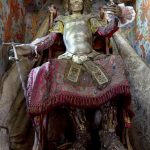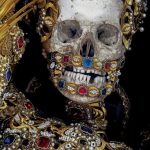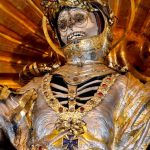History is full of artefacts, and religious history more so. Catholicism is amongst the world’s richest religions in terms of forgotten-about symbolism, icons, and priceless works of art. Take the bejeweled skeletons featured below, for example.
Scroll to read October’s full blog post below, or SUBSCRIBE NOW and receive this post in your inbox on a monthly basis.
DID YOU KNOW?
Your engagement with our posts on social media decides the newsletter content we send you. Your upvote and engagement counts. Please remember to like, comment, or retweet our content.
Here’s some stats from October’s featured post, as at the 31st:
- “The Bejeweled Skeletons of Catholic Martyrs was posted to X on October 16th, 2023. It’s been viewed 733.8K times and reposted 2.9K times. It’s been liked by our audiences 15K times and bookmarked 1,5K times.
Join millions of other art connoisseurs just like yourself on our X account here: @AcademiaAesthe1.
Thinking about the jeweled skeletons of Catholic martyrs. pic.twitter.com/722ue5tkNv
— Academia Aesthetics (@AcademiaAesthe1) October 16, 2023
The Bejeweled Skeletons of Catholicism’s Forgotten Martyrs
These “heavenly bodies” (also known collectively as the bejeweled skeletons of catacomb saints), were named through a combination of historical, religious, and other naming considerations. Here’s a quick breakdown of how these names typically came about:
- Historical and Religious Context: Skeletons were dug up in the catacombs because people thought they were connected to early Christian martyrs. Even if they weren’t 100% sure who these skeletons were, they looked at old records of martyrs and the way they were buried and named them after famous Christian saints or important people from the early days of the church.
- Patronage and Local Tradition: Some skeletons were named after saints who were already important in the local area where they were moved to. This created an important link between the new skeleton and the religious traditions of that place.
- Family and Wealthy Donors: Other skeletons were named after the people or rich families who helped pay for the skeleton’s jewels. This helped encourage others to donate money for the skeleton’s care.
- Similarity to Existing Saints: In some instances, skeletons were named after other well-known saints who had something in common, like a similar name or a connection to the same place or time in history.
Overall, The names helped keep the Christian tradition going, tied the saints to the local culture, and thanked the people who helped keep the skeletons in good shape.
Heavenly Bodies: The Search for Bejeweled Skeletons
Paul Koudounaris is a photographer who investigates and documents religious phenomena, specifically church ossuaries, charnel houses, and shrines. His book, “Heavenly Bodies: Cult Treasures and Spectacular Saints from the Catacombs” showcases the bejeweled skeletons of Catholicism’s forgotten saints and martyrs in a delightful, must-read photographic journey.
Click the images below to view each saint in larger scale or click here to read more about each saint…
- Saint Gratian
- Saint Munditia
- Saint Deodatus
- Saint Albertus
- Saint Maximus
- Saint Felix
Find out more about the Forgotten Martyrs of Catholicism here.
Thanks for reading,
The Curator

